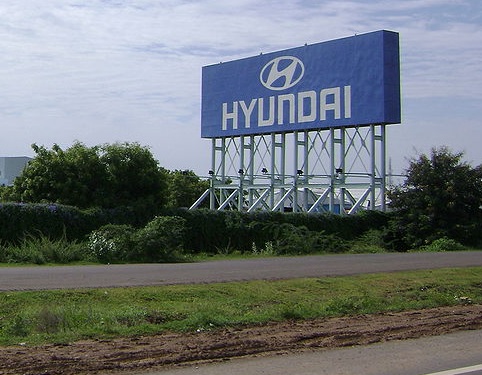The augmented reality wearable technology was used to assist with the complex medical procedure.
Despite the fact that Google Glass has been falling out of the spotlight over the last while, the device has managed to make headlines once again as cardiologists have now used the wearable technology to assist them in completing a surgical procedure to unblock the coronary artery of a 49 year old male patient.
A custom app was created for the purposes of this procedure and the augmented reality headset displayed the 3D assistance.
The Google Glass app was created to offer the surgeons a 3 reconstruction of the artery, which they could view through the headset throughout the length of the procedure. This made it possible for the physicians to more effectively guide a catheter to the area with the clog. Using a catheter was used to send a stent or balloon into a clogged area is a common method of treating a blocked coronary artery. It is a procedure that is called a catheter-based percutaneous coronary intervention (PCI). That said, there are risks involved with this type of surgery, as one of the most challenging components of the process is to image the artery.
Google Glass made it easier for the doctors to use imaging and to view it in a way that could help to guide them.
 Computed tomography angiography (CTA) imaging techniques were used to view the patient’s specific blockage. The augmented reality headset then used the custom mobile app to display the patient’s own unique artery and blockage within the field of vision of the physician. This way, the doctor could visualize the patient’s own coronary vessel as the catheter was used for unblocking the area. In this specific surgery, there were two drug-eluting stents that were successfully implanted into the patient.
Computed tomography angiography (CTA) imaging techniques were used to view the patient’s specific blockage. The augmented reality headset then used the custom mobile app to display the patient’s own unique artery and blockage within the field of vision of the physician. This way, the doctor could visualize the patient’s own coronary vessel as the catheter was used for unblocking the area. In this specific surgery, there were two drug-eluting stents that were successfully implanted into the patient.
Using this strategy with Google Glass, it means that the same CTA images become much more usable and practical for doctors while they conduct the procedure as they can view them at the same time that they are inserting the catheter in order to provide them with continual customized guidance.
This has made the company the first among mainstream automakers to launch an AR technology based guide.
Hyundai has recently announced that before the close of the year, it will become the first among the mainstream automakers to launch mobile app that provides augmented reality features to its owner’s manual.
The Hyundai Virtual Guide mobile app is the automaker’s strategy for bringing its owner’s manual to today’s consumer.
This augmented reality mobile app has been created to convert the traditional vehicle owner’s manual into one that can be enhanced through the use of a smartphone or tablet. The app will provide owners with additional how-to information for properly maintaining their vehicles, about common types of repairs and to help drivers to better understand the features of their cars. To start, the application will be compatible with only one Hyundai model, but over time it will be launched to function with other models as well.
At the start, the augmented reality features will work with the 2015 Hyundai Sonata user manual.
 There are already 45 major features of the 2015 Sonata that can be recognized by the Virtual Guide mobile app. This is a free application and can be downloaded by iOS and Android based device users from the Apple App Store and from Google Play.
There are already 45 major features of the 2015 Sonata that can be recognized by the Virtual Guide mobile app. This is a free application and can be downloaded by iOS and Android based device users from the Apple App Store and from Google Play.
Hyundai decided on the features that it would spotlight with the AR technology through the application of the results of a quality consumer survey. It focused in on the features that were considered to be the most difficult to use so they would be worked into the Virtual Guide for added user support. The hope is that through the additional descriptive abilities of AR technology, it will be easier for vehicle owners to understand their features and will be able to use them more effectively.
The augmented reality app is also made up of 82 different how-to videos, as well as six 3D overlay images that can be viewed overtop of the real-life image of their actual vehicle when the parts of the car are scanned with the smartphone or tablet camera. Among the areas that can be scanned are the dash and engine bay. The application currently provides over 50 info guides.
 Computed tomography angiography (CTA) imaging techniques were used to view the patient’s specific blockage. The augmented reality headset then used the custom mobile app to display the patient’s own unique artery and blockage within the field of vision of the physician. This way, the doctor could visualize the patient’s own coronary vessel as the catheter was used for unblocking the area. In this specific surgery, there were two drug-eluting stents that were successfully implanted into the patient.
Computed tomography angiography (CTA) imaging techniques were used to view the patient’s specific blockage. The augmented reality headset then used the custom mobile app to display the patient’s own unique artery and blockage within the field of vision of the physician. This way, the doctor could visualize the patient’s own coronary vessel as the catheter was used for unblocking the area. In this specific surgery, there were two drug-eluting stents that were successfully implanted into the patient.
 There are already 45 major features of the 2015 Sonata that can be recognized by the Virtual Guide mobile app. This is a free application and can be downloaded by iOS and Android based device users from the Apple App Store and from Google Play.
There are already 45 major features of the 2015 Sonata that can be recognized by the Virtual Guide mobile app. This is a free application and can be downloaded by iOS and Android based device users from the Apple App Store and from Google Play.